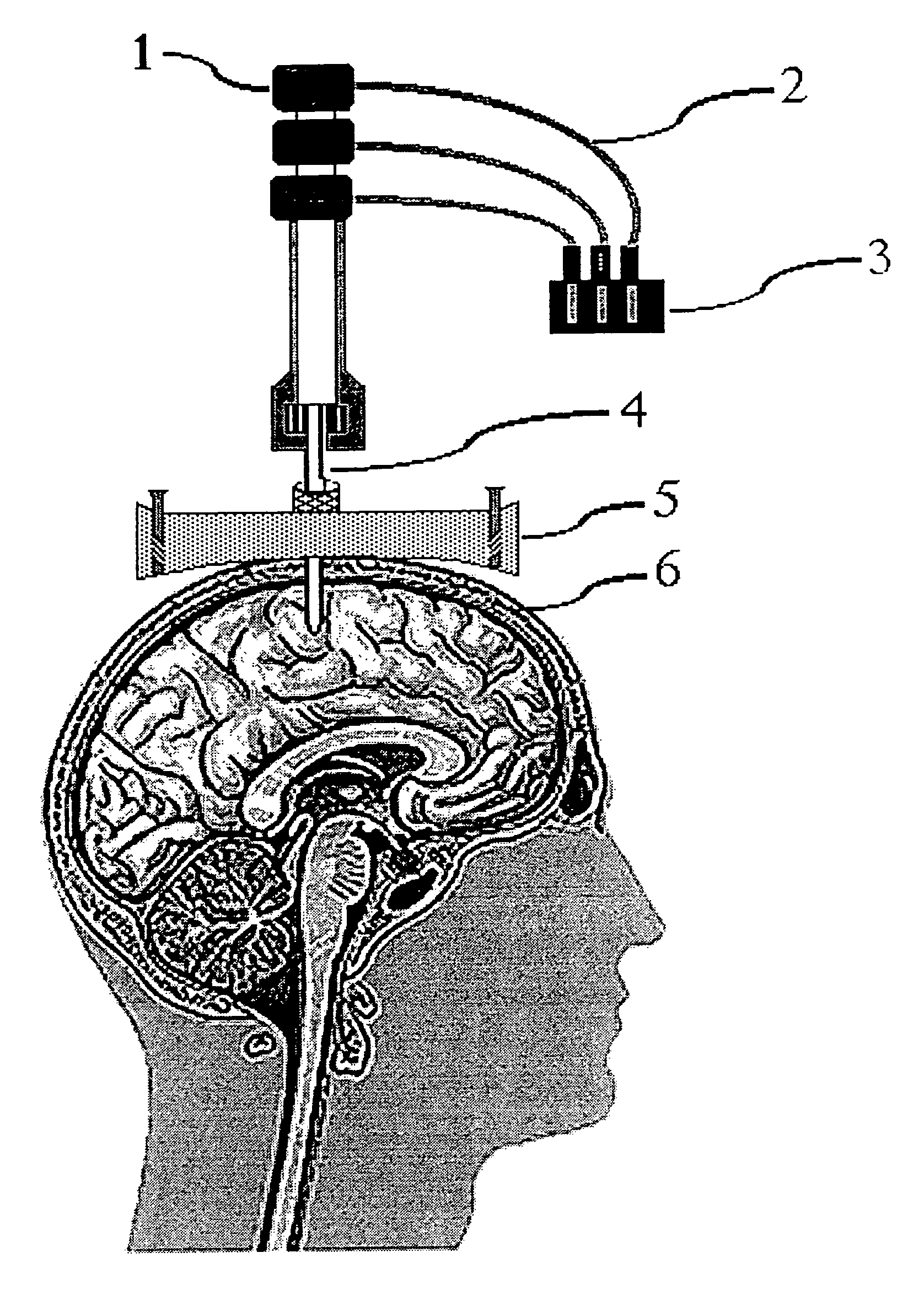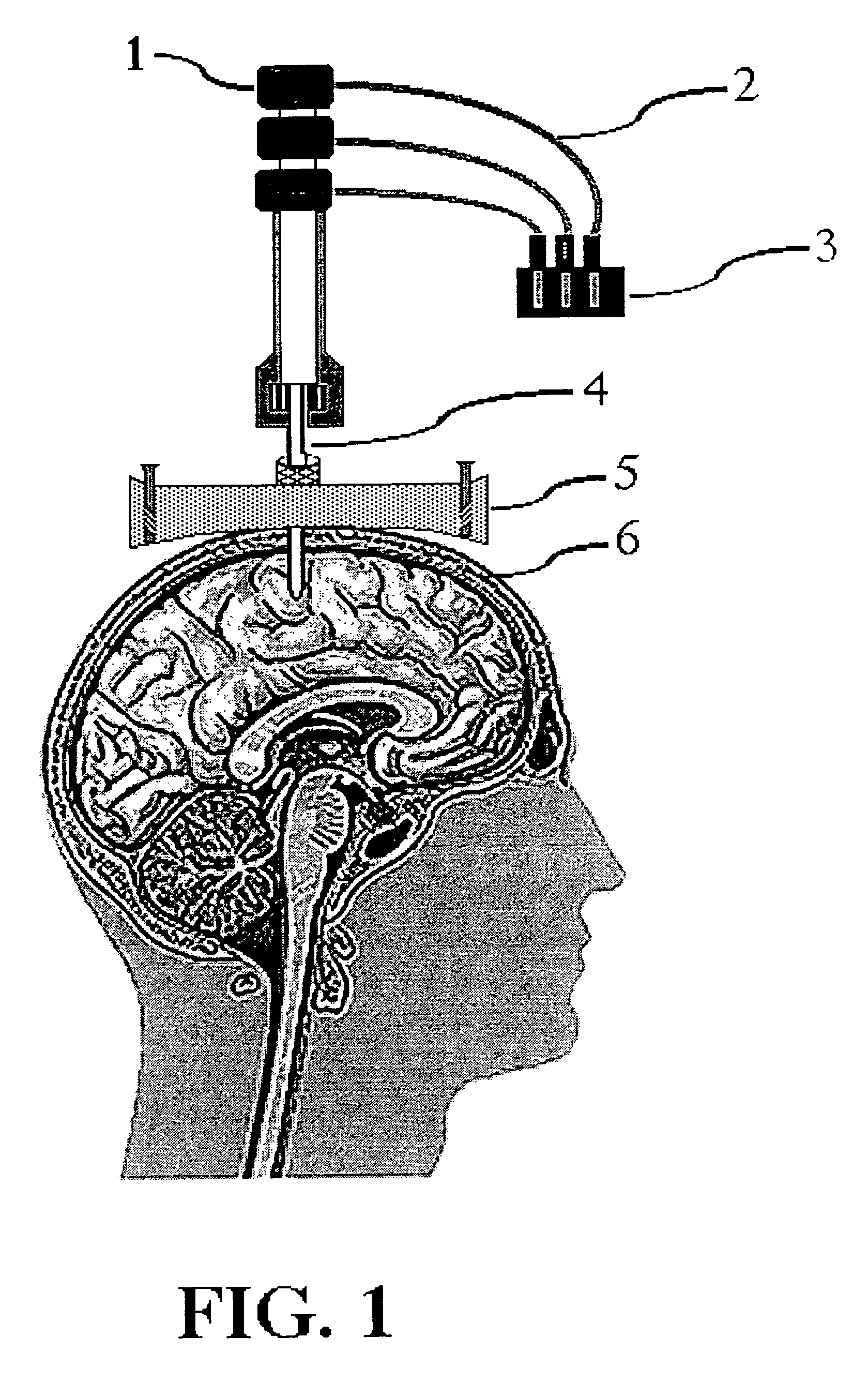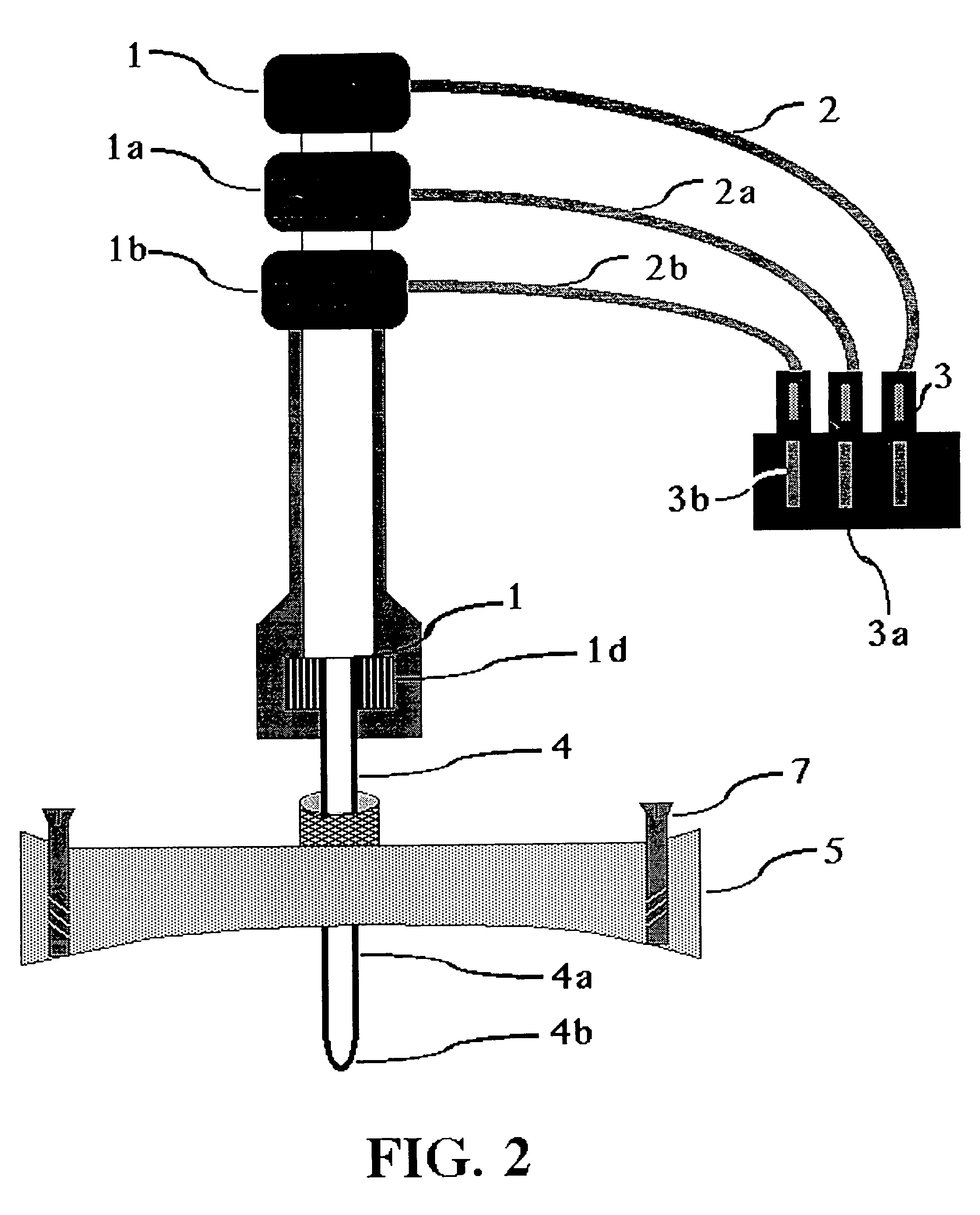Magnetic resonance apparatus for use with active electrode and drug deliver catheter
a magnetic resonance and active electrode technology, applied in the field of magnetic resonance apparatus for use with active electrodes and drug delivery catheters, can solve the problems of inability to achieve the target receptors of brain parenchyma, inability to accurately navigate the process, and inability to accurately diagnose the accuracy of the diagnostic procedure, so as to improve the alterations in the magnetic field. effect of
- Summary
- Abstract
- Description
- Claims
- Application Information
AI Technical Summary
Benefits of technology
Problems solved by technology
Method used
Image
Examples
Embodiment Construction
[0047]One of the significant difficulties with delivery of materials such as drugs, hormones, or neurotransmitters to living tissue is assuring that the materials are delivered to the target receptor location in the intended amount. Many materials which are delivered to a patient, even though beneficial in the treatment of a specific condition, may be moderately or even strongly noxious or damaging to healthy tissue. It is therefore an object of conventional materials application treatment to maximize dosage to a desired location and to minimize dosage to locations which do not require the delivery of the material. Additionally, newer medical treatments may include procedures which remove unwanted deposits of materials with an expectation that the removal will be assisted by physical removal (by a withdrawal system) or natural bodily function removal (e.g., the circulatory system), or which may attempt to stimulate the body to produce natural chemicals (of which a patient may be def...
PUM
 Login to View More
Login to View More Abstract
Description
Claims
Application Information
 Login to View More
Login to View More - R&D
- Intellectual Property
- Life Sciences
- Materials
- Tech Scout
- Unparalleled Data Quality
- Higher Quality Content
- 60% Fewer Hallucinations
Browse by: Latest US Patents, China's latest patents, Technical Efficacy Thesaurus, Application Domain, Technology Topic, Popular Technical Reports.
© 2025 PatSnap. All rights reserved.Legal|Privacy policy|Modern Slavery Act Transparency Statement|Sitemap|About US| Contact US: help@patsnap.com



